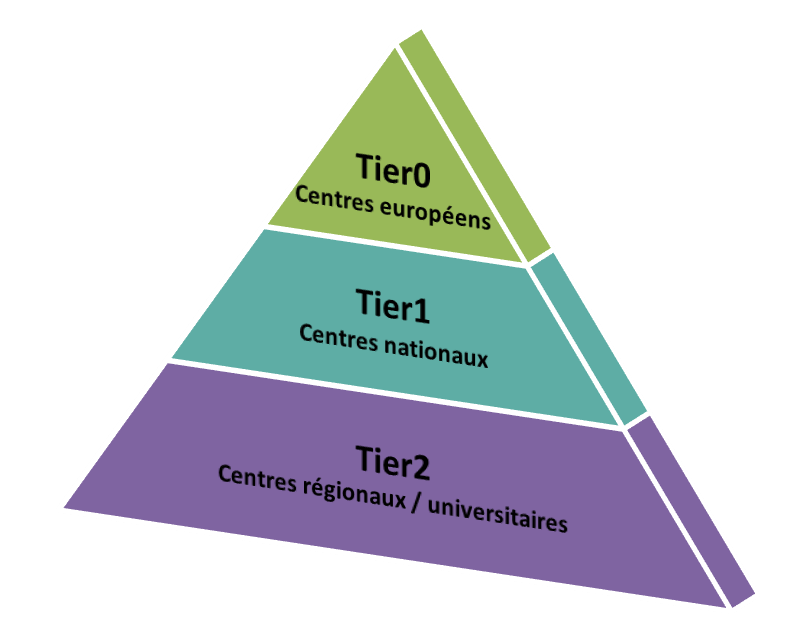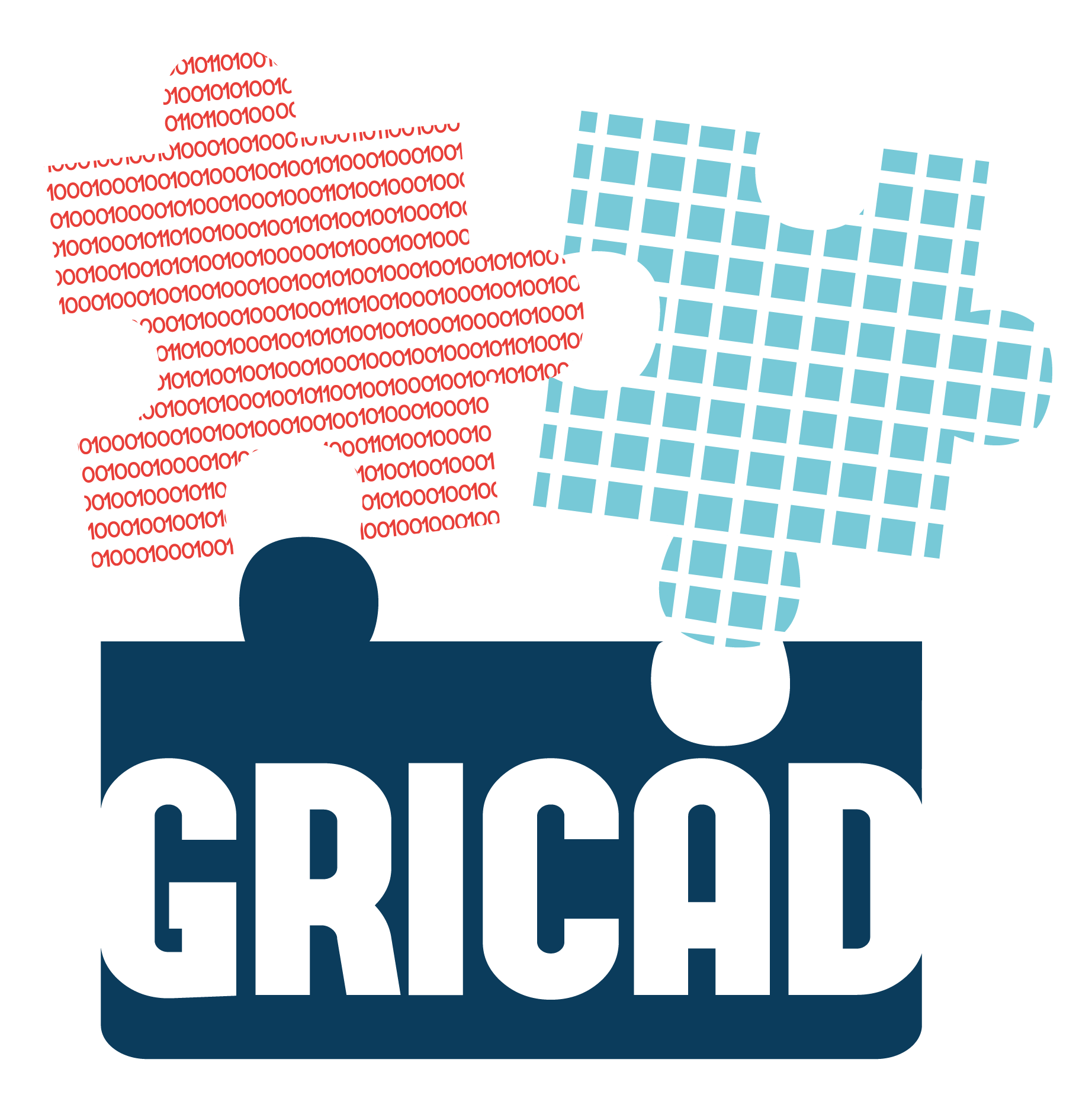Infrastructures
Digital infrastructures for research are decline classically according to their perimeter:
Some of them are labelled Research Infrastructure (RI) or Very Large Research Infrastructure (VLIR) and appear on the national roadmap for Research Infrastructures.For more information on the national strategy for research infrastructures (french).
With regard to High Performance Computing (HPC), we are talking about the computing pyramid:

GRICAD maintains important links with national infrastructures and can support you in their use.
From a technological point of view, there are strong interactions with Grid'5000 / SILECS, with advances in computer research in the field of intensive computing being particularly interesting and relevant to deploy on our production infrastructures.




